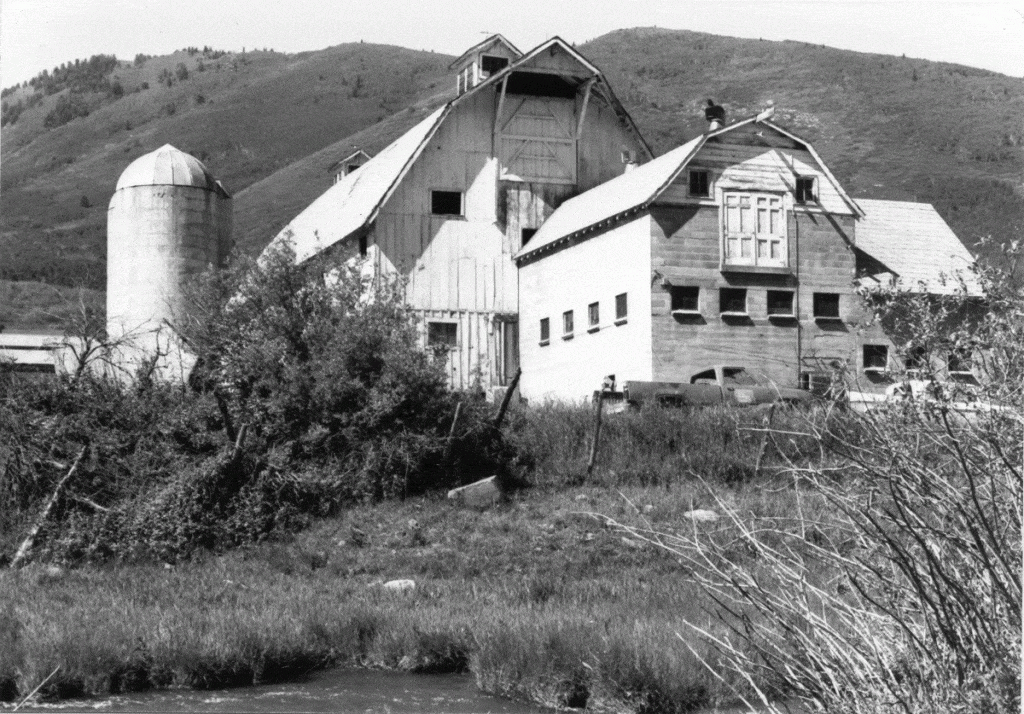When Park City Municipal bought the McPolin Osguthorpe farm in 1990, I was newly elected to the Park City Council. Nan McPolin had befriended me when we served together on the Parks and Recreation Board and filled me full of stories about her husband’s family. I knew the Osguthorpe children from school activities, but I didn’t know much about the Osguthorpe family’s story.
When I saw an article about the recent stabilization of the barn on the property, I decided do some more research and fill in my gaps of knowledge and understanding about the family that lived on the farm from 1947 until 1990.
As hard as it might be to imagine today, SR 224 used to be a two-lane highway and Snyderville was an agricultural community with as many as nine dairies: Spriggs, Murnin, Lurcher, Wallin, Dale Durant, Lou Felton, Marcellin, Staley and Osguthorpe. At least twice a day, traffic was halted while cows were trailed across the highway from pasture on the south side to milking parlor on the north side.
With Utah Department of Transportation needing additional land to widen the highway, the Osguthorpe family determined that dairy farming at that location was no longer viable. They agreed to sell about 200 acres with very old water rights to Park City Municipal for $4.4 million. In 1990, Highway 224 was widened and the remaining land preserved as open space.
Many old newspaper articles tell of how the Osguthorpe family acquired large parcels of land in Summit County and struggled to keep it as open land and farmland, rather than allow it to be developed for housing subdivisions. Discussions with UDOT over the widening of the road had begun around 1985 and continued for 5 years. It must have been a difficult decision to sell the farm on what has become the “front door” of a premier destination resort.
Homesteaded by the Harrison McLane family since 1886, the farm was acquired by the McPolin family in 1896. The McPolins also owned a brewery and bottling works in Park City. Dan and Isabelle McPolin had emigrated from Ireland and raised their family on the farm.
The Harrison McLane buildings were replaced with a house that was moved in two parts from the King Con Mill where it had served as an office. That house served the family for many years, but burned in an electrical fire around 1955. The surviving asphalt-shingled walls remained standing for over 40 years until the city tore them down. The house that is showcased now on the farm is a slightly smaller replication of the original house.
The McPolins also built the magnificent white barn, allegedly from lumber salvaged from old tailings mills that operated below what is now Prospector. The barn was likely completed prior to Dan McPolin’s death in 1922, after which son Patrick McPolin inherited the farm and moved his family into the house. Come back next week to learn more about the farm’s later history and the Osguthorpe family.

Credit: Park City Historical Society and Museum, Judy Taylor Collection